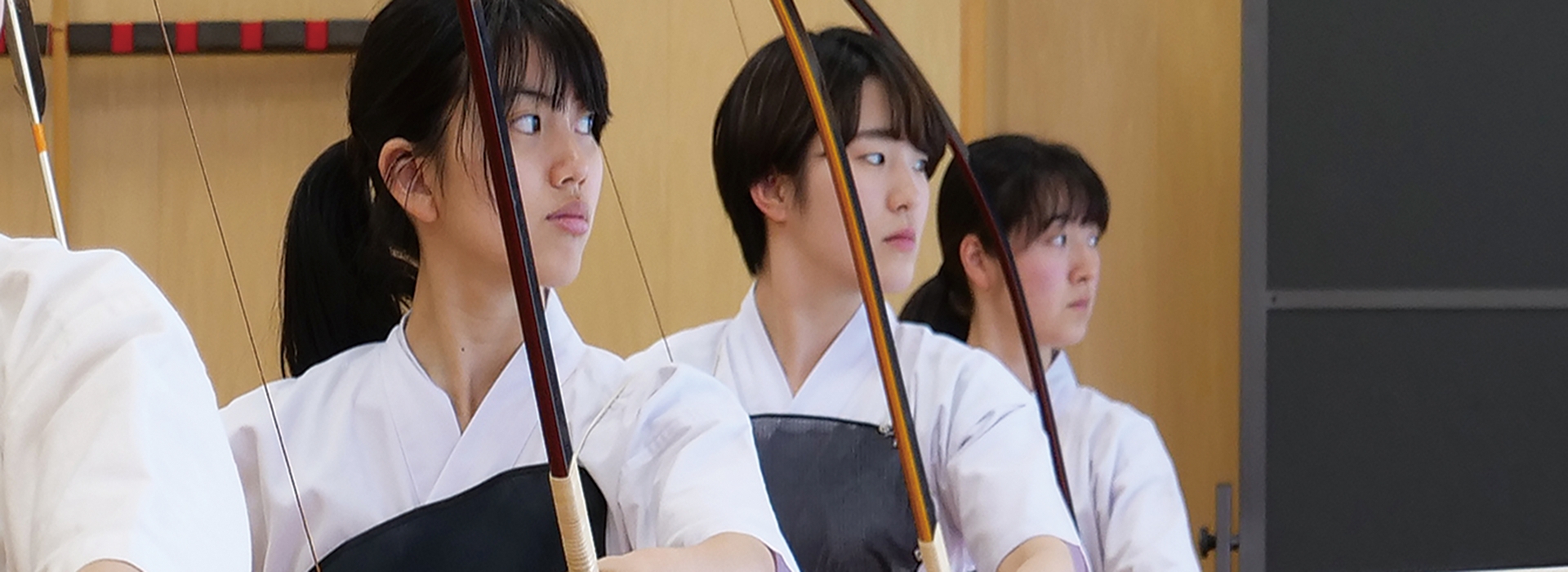
Department of Budo Education
Learn knowledge and skills in budo and traditional performing arts that make up Japan’s unique culture of physical exercise.
This academic program is designed for the students to learn practical skills and theories related to budo (judo, kendo, sumo, karate, aikido, naginata, kyudo, and shorinji kenpo)—Japan’s unique culture of systematized and traditional physical exercise—as
well as other related traditional performing arts such as nihon-buyo (classical Japanese dance), minzoku-buyo (Japanese folk dance), and taiko (Japanese percussion instruments) that have been integrated into local folklore events and passed down through
generations from ancient times, along with the spirit of ‘do (philosophy and value system)’ unique to Japan. It provides the students with essential teaching skills that can be applied in Japan or overseas.
| Curriculum duration: | Four years |
| Academic degree: | Bachelor (Physical Education) |
| Class size: | 100 students |
| Graduation requirement: | 124 credits at least |
Career paths and qualifications
Typical career paths
- Junior and senior high school teachers (health and physical education)
- Theater companies and related businesses
- Jobs in traditional performing arts
- Police officers
- Prison officers
- Public employees of various types
- Company employees, etc.
Licenses and qualifications that may be obtained
- Junior high school class-1 teacher license (health and physical education)
- Senior high school class-1 teacher license (health and physical education)
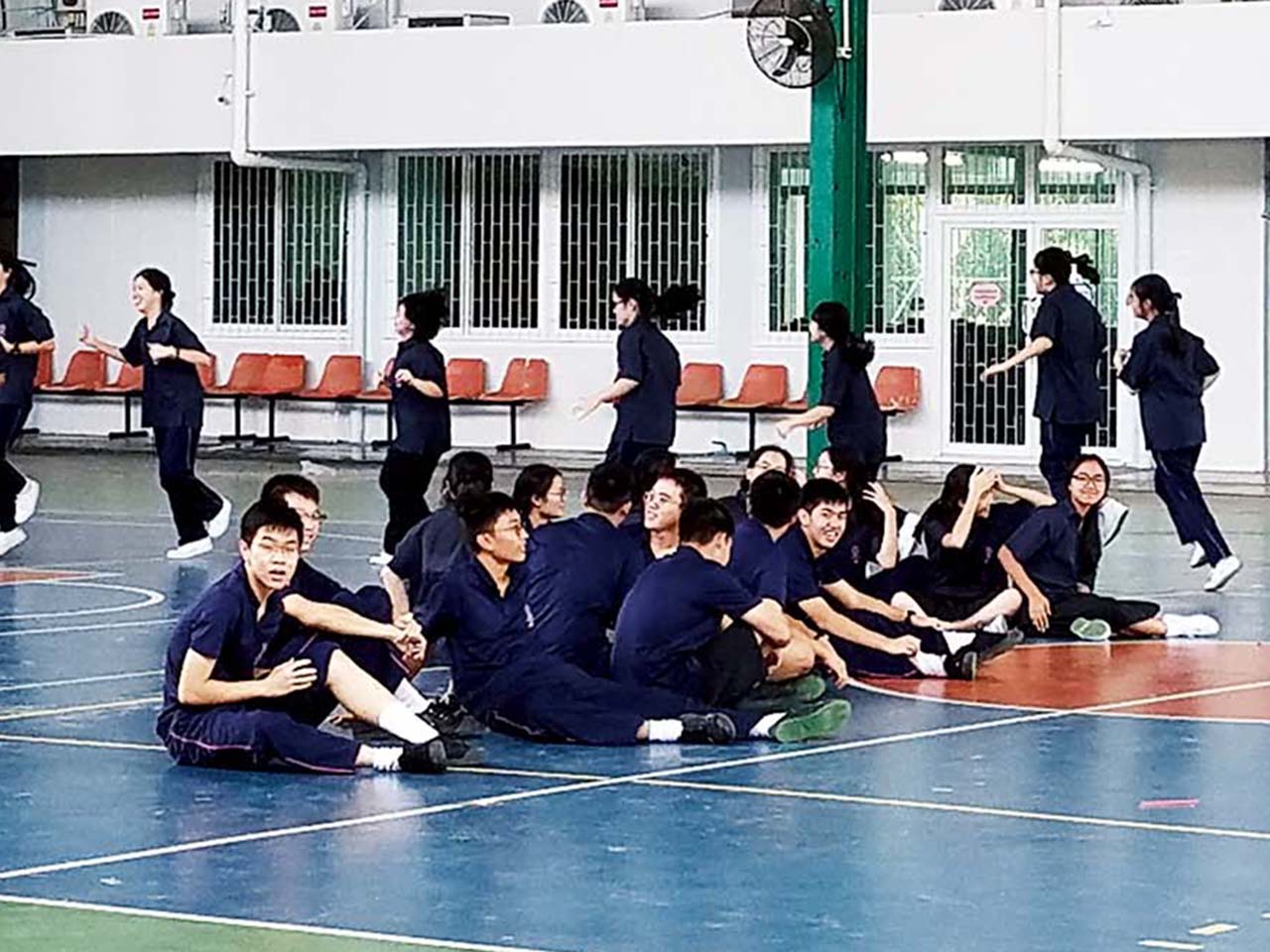
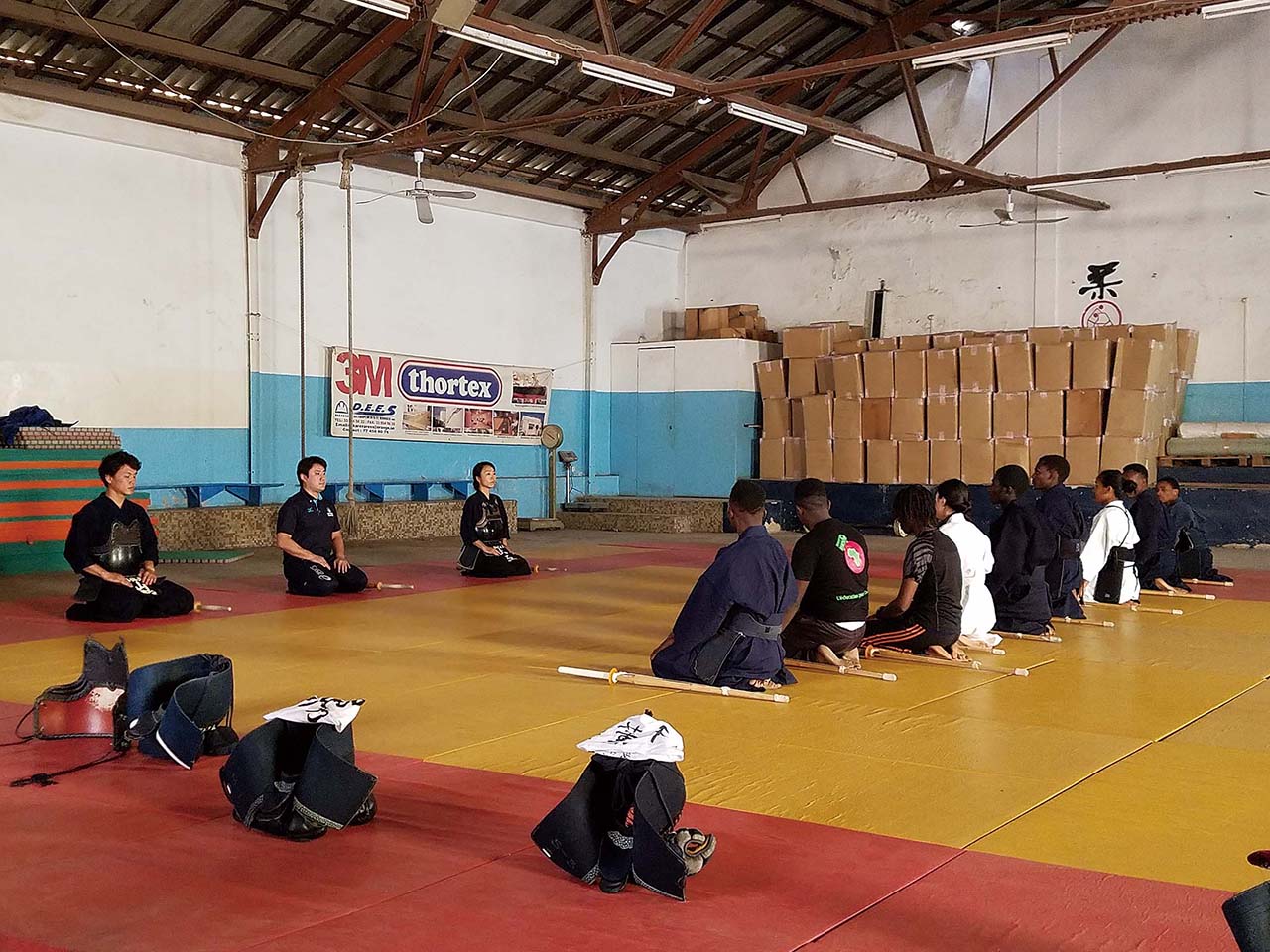
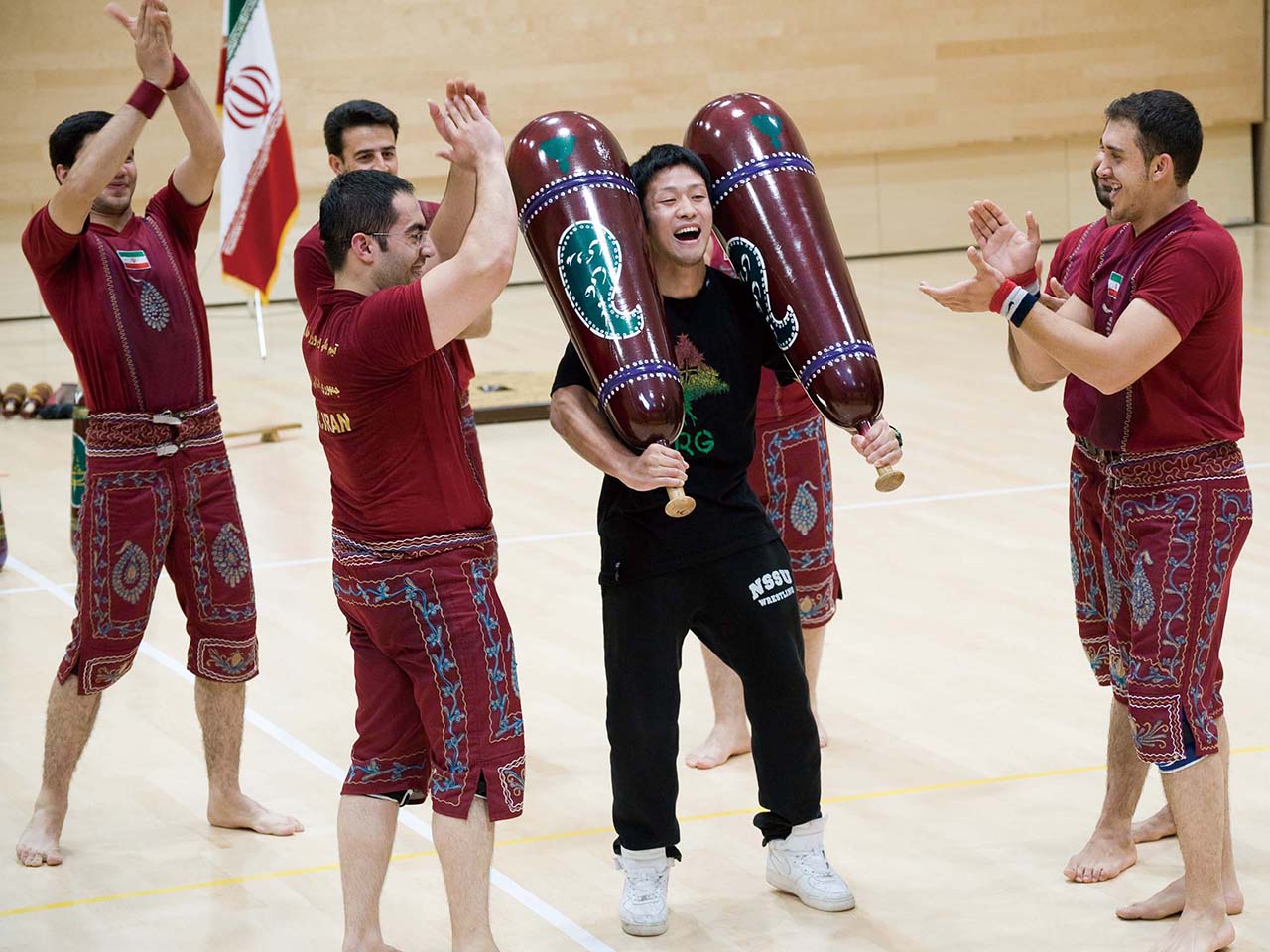
Key departmental features
Learn martial arts theories.
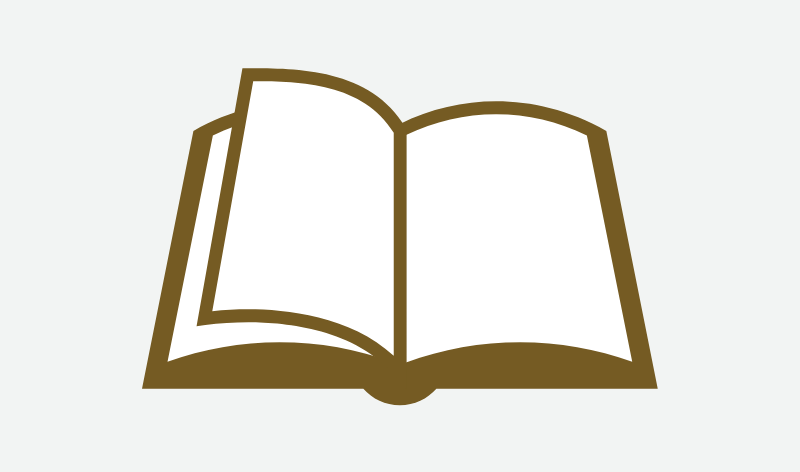 In the core courses (theoretical study), the students learn various education theories, technical theories, spiritual theories, cultural theories, practice theories, manners, etc. that pertain to Japanese martial arts while also systematically understanding
the country’s performing arts in general, along with its traditional way of thinking. In addition, there are other elective and compulsory courses for the students to take for the international promotion of budo and other international exchange activities
that prepare the students for practicums overseas.
In the core courses (theoretical study), the students learn various education theories, technical theories, spiritual theories, cultural theories, practice theories, manners, etc. that pertain to Japanese martial arts while also systematically understanding
the country’s performing arts in general, along with its traditional way of thinking. In addition, there are other elective and compulsory courses for the students to take for the international promotion of budo and other international exchange activities
that prepare the students for practicums overseas.
Engage in international exchange.
 In the core course (practice) of Traditional Cultural Exchange Practicum, the students engage in budo practice sessions overseas to develop their skills for communicating with a wide range of people regardless of their nationalities. In addition, its
related upper-level courses allow the students to learn various theories of Japanese performing arts, which complement the fundamental knowledge previously learned, and enable their study of further knowledge with more breadth through those theories.
In the core course (practice) of Traditional Cultural Exchange Practicum, the students engage in budo practice sessions overseas to develop their skills for communicating with a wide range of people regardless of their nationalities. In addition, its
related upper-level courses allow the students to learn various theories of Japanese performing arts, which complement the fundamental knowledge previously learned, and enable their study of further knowledge with more breadth through those theories.
Develop problem-solving skills.
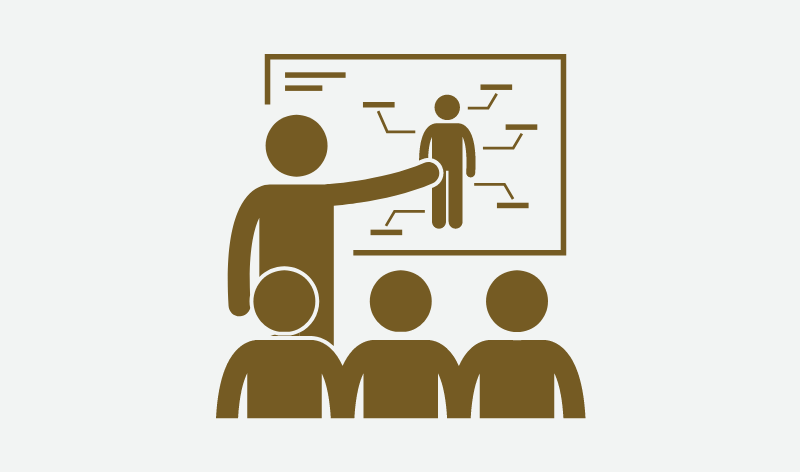 Sports culture research courses are offered throughout the four-year curriculum, which are designed to enhance the students’ overall capacity to think correctly, so that they would gain the ability to solve problems under various circumstances. There
are also more practical courses that are optimized for developing the students’ technical performance skills, through which the spiritual and cultural aspects of Japan’s traditional sports are understood, and the students’ ability to teach and impart
related knowledge and theories is improved.
Sports culture research courses are offered throughout the four-year curriculum, which are designed to enhance the students’ overall capacity to think correctly, so that they would gain the ability to solve problems under various circumstances. There
are also more practical courses that are optimized for developing the students’ technical performance skills, through which the spiritual and cultural aspects of Japan’s traditional sports are understood, and the students’ ability to teach and impart
related knowledge and theories is improved.
Department’s academic aim
The Department of Budo Education’s academic purpose is to teach its students the ability to facilitate international exchange and social contribution activities, not only by providing technical instructions in budo and traditional performing arts but also by communicating the spiritual aspect ’do (philosophy and value system)’ unique to Japan to other practitioners. The program is also designed to develop the students’ ability to teach Japan’s culture of physical exercise and spirituality at various educational institutions, and build their character so that they can contribute to the achievement of peace and prosperity in Japan and the rest of the global community.Sample course
Learn the moves and come to appreciate the spiritual aspect of kendo.
Key features of this practical course
Exercise Method: Budo (Kendo)
Instructor: Nobuaki FurusawaKey features of this practical course
- It develops performance skills that are useful when teaching budo at junior high schools.
- It provides an optimal opportunity for students to properly mind their appearance, show deep respect to others, and pursue the way of kendo, with a sense of equanimity.
- In the course, students can master the technical skills and the spiritual aspect of kendo, while using the discipline to fuel their own personal growth.
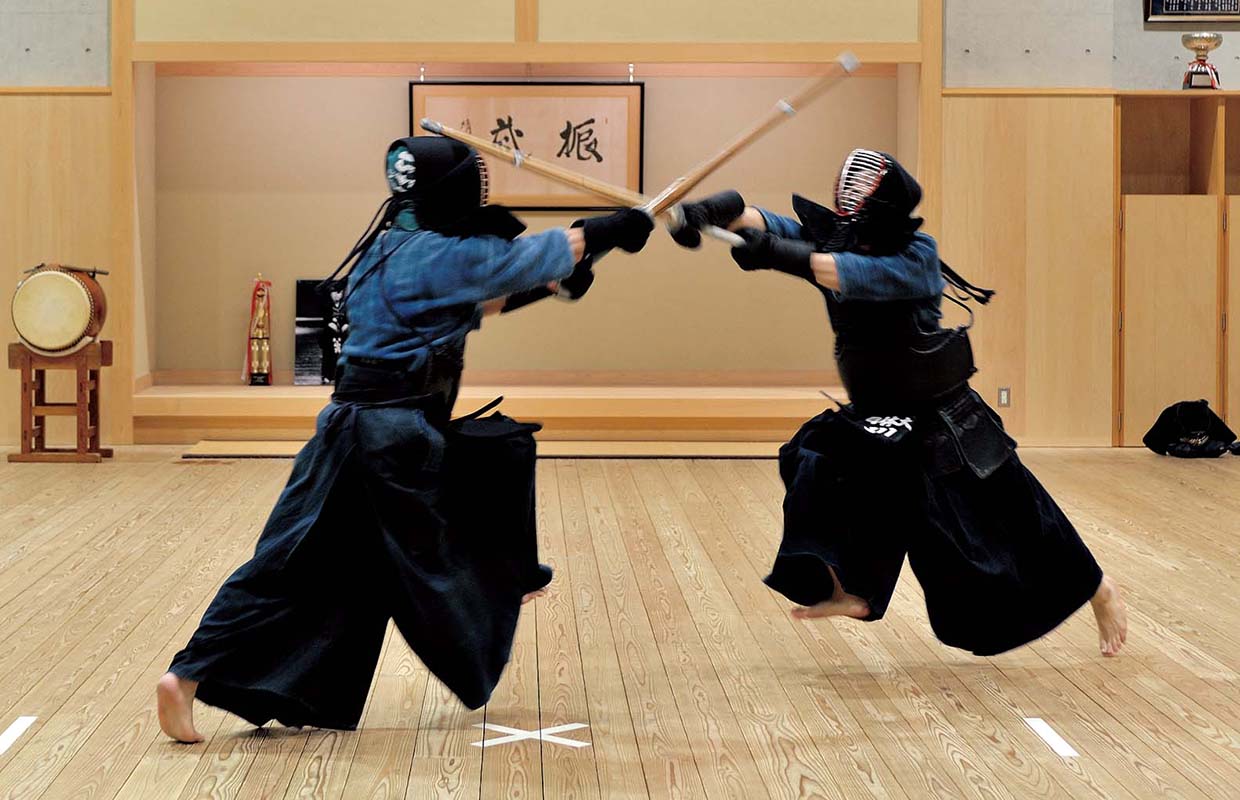
Kendo is part of Japan’s culture of unique physical exercise. Master instructional skills that can be used to teach at junior high schools.
This is a budo education course for learning Japan’s original physical exercise culture through budo. In this course, the students learn practical knowledge, skills, and theories of budo that are rooted in Japan’s spiritual heritage, and develop a capability to communicate the aforementioned information and teach budo to others. Due to the amendment of the junior high school curriculum guidelines by the Ministry of Education, Culture, Sports, Science and Technology, it has become mandatory for junior high schools to incorporate budo (judo, kendo, sumo, etc.) into their education programs since April 2012. To adapt to such change, this course teaches the students the traditional way of thinking applied in kendo pursuant to the amended curriculum guidelines. It covers basic moves, shinai swinging practice, how to handle the kendo gear, and one-on-one competition skills, and the students would become capable of engaging in competitive matches against each other at the end of the course.This practical course covers the theoretical, technical, and mental aspects of kendo. Those willing can take the 1stkyuexamination.
At the start of this course, the students put on their kendo-gi (jacket) and hakama (trousers) and learn the proper bowing methods while sitting and standing up. Such manners are part of the crucial movement system in budo, where all is said to begin with a bow and end with a bow, to display respect. It is through such practicing of respectful manners that the students are able to understand the fundamental spirit of budo. In terms of practical aspects, the course first teaches the basic moves of kendo including various combat stances and proper shinai swinging techniques, after which the students put their basic skills to the test by engaging in offensive and defensive practice competitions toward the course’s end. In addition, any willing students can prepare for and take the examination to obtain 1stkyucertification outside the course (separate fees required). This course may serve as an impetus for those trying out kendo for the first time to become lifelong practitioners of the sport.Dance Creation Theories (including art work theories)
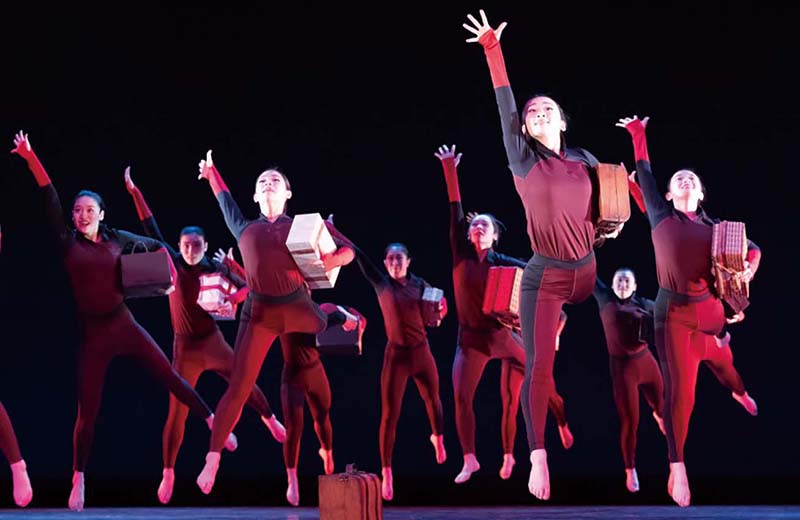 Gain broaden knowledge on the art of dance and develop a sophisticated faculty for appreciating its aesthetics.
Gain broaden knowledge on the art of dance and develop a sophisticated faculty for appreciating its aesthetics.
In this course, the students watch and learn about various dance productions in video format, and study dance history, movement, themes, expressions, and creative processes from a holistic viewpoint. This involves viewing of dance performances from the past, while understanding the historical background against which the choreographers and other creators made those dances, and deeply investigating what their creative intents might have been. Once dance creation methods are understood, it becomes clear that one movement has the potential of changing into various dance sequences, enhancing the joy of creation.
Budo Practice (Kyudo)
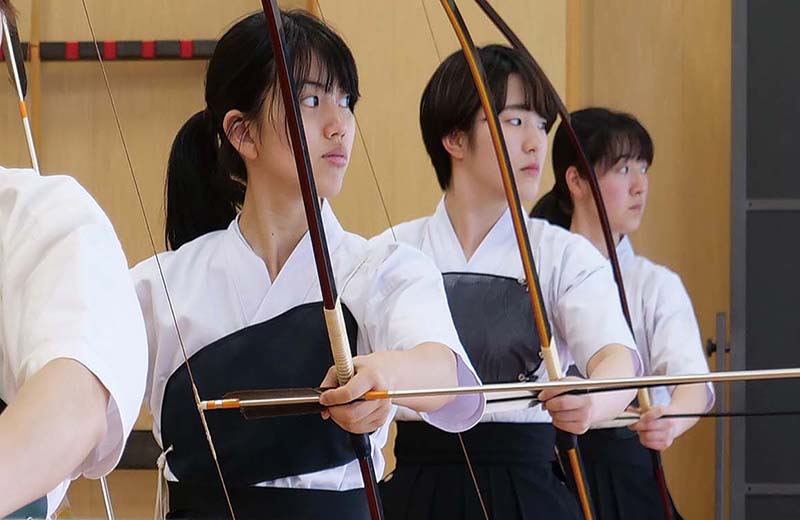 Apply the proper technique to aim at the target, release the arrow with a sense of calm, and come to know the budo spirit.
Apply the proper technique to aim at the target, release the arrow with a sense of calm, and come to know the budo spirit.
Kyudo is a traditional martial art of Japan that existed since ancient times, the purpose of which is to apply the correct technique to shoot the arrow and hit the target. One of its key features is that it can be practiced by people of all strengths, as the yumi (Japanese bow) can be adjusted to suit each individual’s physical ability. In this course, the students first get accustomed to the kyudo equipment, and learn the basic kyudo rule ofshaho-hassetsu(eight stages of shooting), before engaging in actual kyudo practices including learning of respectful manners.
Budo Teaching Methods
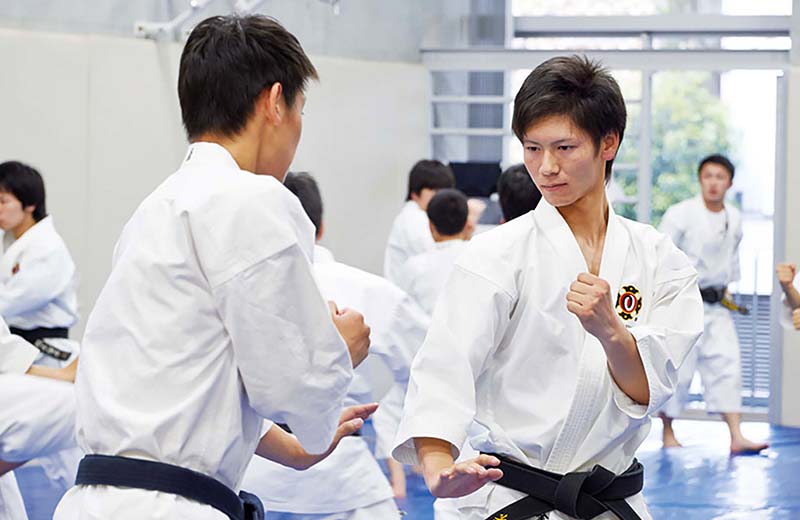 Theoretically learn the budo teaching skills necessary in school education.
Theoretically learn the budo teaching skills necessary in school education.
As budo has officially become a part of the compulsory curriculums at all junior high schools in Japan, the provision of sound budo instructions has become increasingly dependent on the instructors’ own technical skills, expertise, experience, and attitude. This lecture course allows the students to learn the proper instruction methods and fundamental instruction rules by studying related theories, and develop the ability to teach budo effectively in school settings. This course is mainly comprised of lectures.